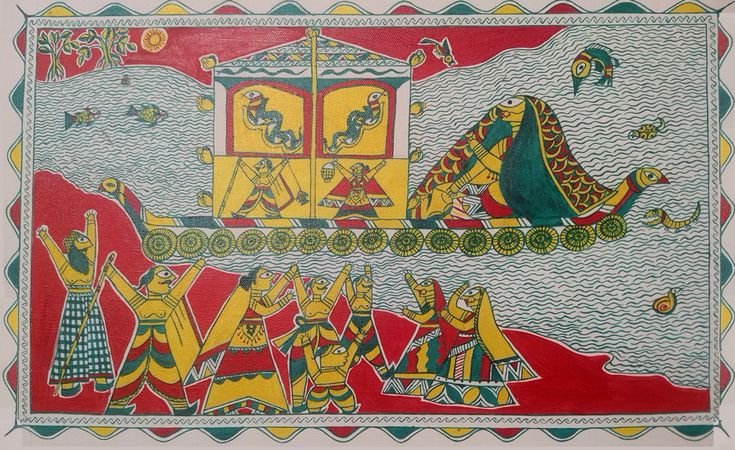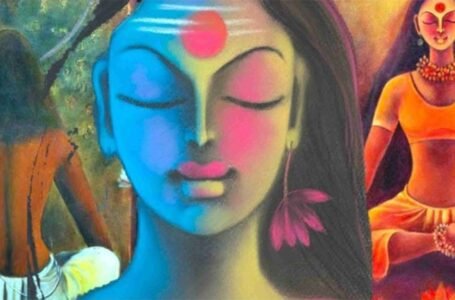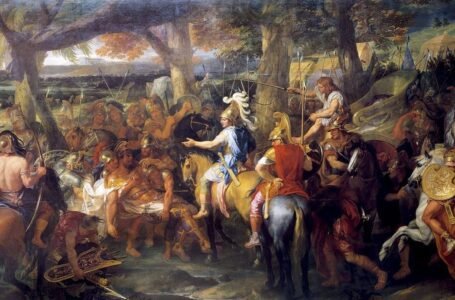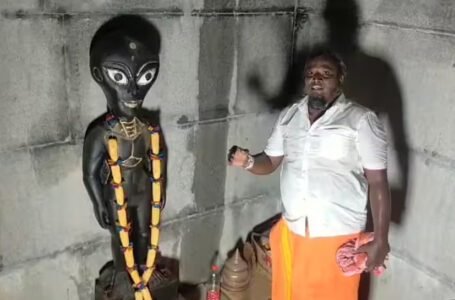Manjusha Art of Bihar: The Dying Legacy of Angika Art

Manjusha Art, also known as Angika Art, is a traditional and vibrant folk art form that originated in the Bhagalpur region of Bihar, India. Deeply rooted in the cultural and religious history of the region, Manjusha Art has been cherished for its distinctive style, rich storytelling, and religious significance. This article delves into the origins, themes, techniques, cultural significance, and present-day challenges of Manjusha Art, particularly focusing on its association with the legend of Bihula and her devotion.
Manjusha Art has its roots in the Anga region of Bihar, particularly in Bhagalpur. The art form dates back several centuries and is believed to have been practiced during the Anga Mahajanapada era. Traditionally, it was associated with religious rituals and festivals, particularly the Bihula-Bishari Puja, a regional festival celebrated with great fervor in Bhagalpur and surrounding areas.
The art form is said to have been inspired by the legend of Bihula, a woman known for her undying devotion and love for her husband, who, according to the story, was bitten by a snake and died. Bihula, with unwavering faith and determination, undertook a perilous journey to please the goddess Mansa (also known as Bishari) to bring her husband back to life. This tale of devotion, sacrifice, and resilience forms the central theme of Manjusha Art.
Manjusha Art is characterized by its unique style of storytelling, which revolves around mythological tales, particularly the legend of Bihula. The art form is replete with symbols and motifs that convey religious and cultural messages. Common motifs include snakes (symbolizing goddess Mansa), flowers, birds, fish, and other natural elements.
The artworks are often presented in a series of paintings, narrating the story in a sequential manner. The use of repetition, vivid imagery, and symbolic representation creates a captivating visual narrative that has been passed down through generations.
The distinctive style of Manjusha Art sets it apart from other folk art traditions of India. The art is traditionally executed on paper, cloth, or walls using natural colors derived from flowers, leaves, and minerals. One of the most striking features of Manjusha Art is its bold outlines, which are made using bamboo sticks or brushes dipped in black pigment. These outlines are often filled with bright, vibrant colors like pink, yellow, green, and red.
The paintings follow a unique “box” format, with each panel or box narrating a specific part of the story. This compartmentalized structure is believed to be inspired by the traditional Manjusha boxes, which were ritualistic containers made of bamboo, jute, and paper, used during religious ceremonies.
Manjusha Art is more than just a visual art form; it is a medium of cultural expression and religious devotion. The art form serves as a testament to the rich heritage of Bhagalpur and the Anga region, reflecting the beliefs, values, and rituals of the local communities.
The Bihula-Bishari festival, which continues to be celebrated in parts of Bihar, is a major occasion where Manjusha Art is prominently displayed. The paintings are often used as decorative elements during the festival, illustrating the episodes of the Bihula legend.
Despite its cultural importance, Manjusha Art has been on the verge of extinction. The decline can be attributed to several factors, including lack of patronage, commercialization, changing societal preferences, and the dominance of more popular art forms.
However, in recent years, there have been efforts by local artists, cultural organizations, and the government to revive and promote Manjusha Art. Art exhibitions, workshops, and academic research have played a role in generating awareness about the art form. Additionally, some artists are experimenting with contemporary themes and mediums to keep the tradition alive.
Manjusha Art, also known as Angika Art, stands as a testament to the rich cultural heritage and artistic traditions of Bihar, particularly the Bhagalpur region. Its origins, deeply intertwined with the folklore of Bihula-Bishari, reveal how storytelling, spirituality, and visual creativity have been fused together to form a unique and powerful medium of expression. What distinguishes Manjusha Art from other traditional art forms is not only its stylistic choices—characterized by bold, sweeping lines, minimalist detailing, and vibrant, restricted color palettes—but also its narrative-driven essence that draws from age-old myths and religious beliefs.
The art form’s journey from being a local tradition practiced during the Bishari Puja to a gradually recognized cultural artifact of Bihar has been both fascinating and challenging. While the simplicity of the art style and its accessibility might have contributed to its resilience over the centuries, it is this same simplicity that has often been mistaken for a lack of sophistication by mainstream art collectors and promoters. In a world that increasingly values complexity and innovation, Manjusha Art has, for a long time, been overshadowed by the more polished and intricately detailed Madhubani Art of Bihar.
However, dismissing Manjusha Art as merely primitive or unsophisticated undermines its cultural and historical significance. The art form is a living document of the region’s folk traditions, belief systems, and community rituals. Its survival into the modern age is a testament to the dedication of local artists and cultural enthusiasts who have continued to pass down the skills and stories through generations. Furthermore, the rawness of its artistic execution should be appreciated as a deliberate choice rather than a limitation. The bold outlines and striking colors are intentional tools used by artists to convey emotions, establish identity, and emphasize the allegorical nature of their compositions.
Despite its historical significance and cultural richness, Manjusha Art today stands on the brink of extinction. The decline can be attributed to multiple factors, including the lack of institutional support, minimal commercial viability, and the waning interest of the younger generation in preserving traditional art forms. Additionally, the socioeconomic conditions of the artists, most of whom belong to marginalized communities, have made it difficult for them to continue practicing their craft without external support. Unlike Madhubani Art, which found state patronage and global recognition, Manjusha Art has remained largely neglected and uncelebrated outside its local context.
Yet, all hope is not lost. There have been numerous efforts in recent years aimed at revitalizing this endangered art form. Local NGOs, cultural organizations, and individual artists are working to promote Manjusha Art by organizing workshops, exhibitions, and training programs. The Bihar government has also taken some initiatives to support artisans by providing platforms for their work to be displayed and sold. Moreover, the increased interest of scholars, art historians, and cultural enthusiasts has led to a growing awareness of the need to preserve this unique tradition.
The digital era presents both challenges and opportunities for Manjusha Art. While globalization and mass production threaten the authenticity of traditional practices, the internet also offers a powerful platform for the promotion and marketing of local art forms. Digital storytelling, online exhibitions, and e-commerce platforms can provide Manjusha artists with new ways to reach broader audiences and earn a sustainable livelihood from their craft.
Preserving Manjusha Art requires a multi-faceted approach. Beyond financial and institutional support, there needs to be a conscious effort to engage the younger generation and make them stakeholders in the preservation process. Educational institutions, cultural tourism, and art residencies can all play vital roles in making Manjusha Art relevant to contemporary audiences.
Moreover, recognizing Manjusha Art as a cultural asset that transcends its aesthetic value is essential. It should be viewed not only as a beautiful art form but also as a repository of intangible cultural heritage, reflecting the social, religious, and philosophical beliefs of the people who have nurtured it for centuries. To save Manjusha Art from fading into obscurity, the broader cultural ecosystem must acknowledge its significance and work collaboratively to ensure its survival.
The story of Manjusha Art is not just about the past; it is about resilience, adaptation, and hope for the future. If genuine efforts are made to provide the necessary support, recognition, and resources, there is a strong possibility that this ancient art form will not only survive but also thrive in the contemporary world. Manjusha Art deserves its rightful place in the cultural and artistic heritage of India, and preserving it is not just a matter of nostalgia but an essential act of cultural preservation and identity assertion.


